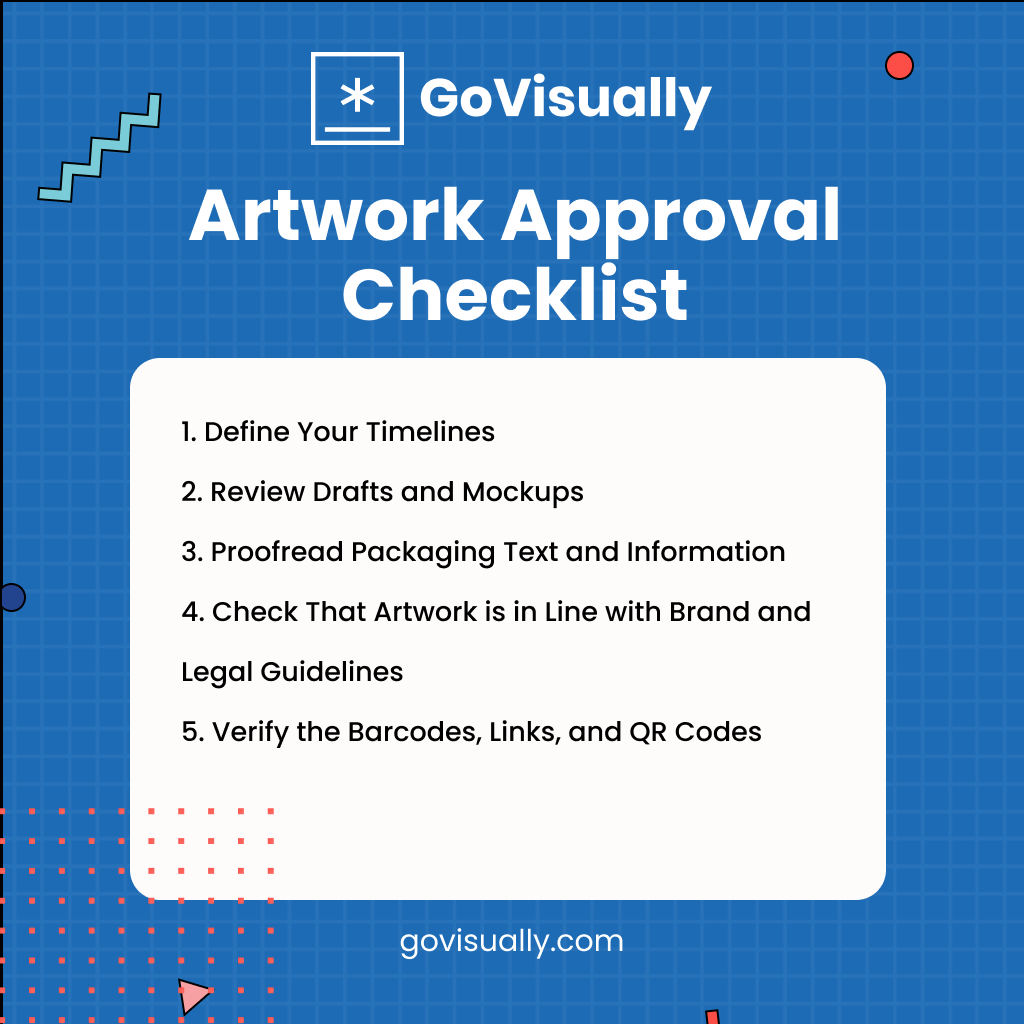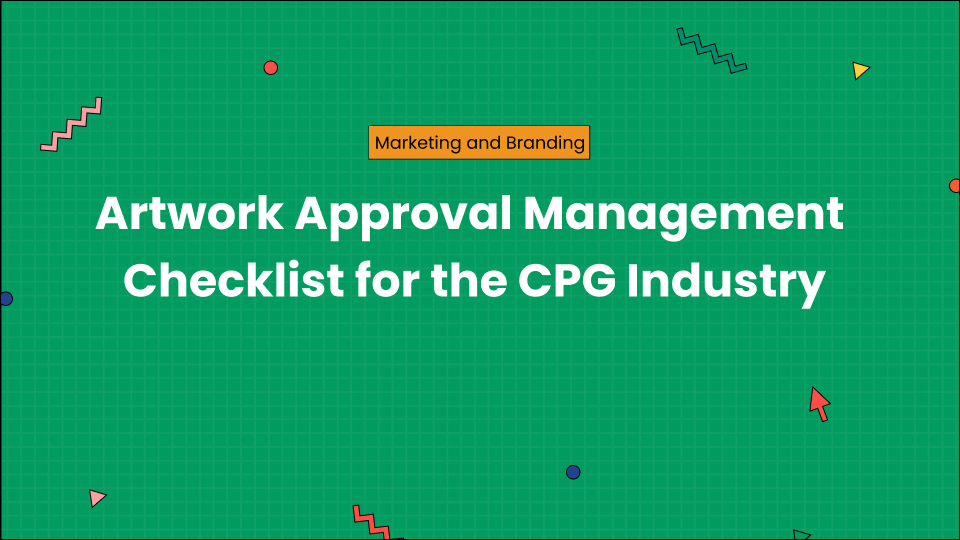Any CPG product can face a massive backlash if it misses even one small detail in its design.
Like, Lidl faced in August 2023 when it had to recall its Paw Patrol kid’s snacks.
It came to this because Lidl did not review the contents of its packaging correctly. According to Lidl’s public statement, the link on its packaging took the customers to an explicit website “unsuitable for children.”
To control this matter, the company immediately took the item down from sale. They even recalled the product back in stores.
The possibility of such mistakes is scary. So, even the slightest change, like an address or website change, requires multiple rounds of reviews before approval.
To complete the approval process in a short time without any errors, it is always wise to create a checklist. This will help you keep the process organized and prevent any mistakes possible.
But what points should you cover, and which milestones should you focus on? Don’t worry. We’ve created this guide to help you make an artwork approval checklist for yourself.
Table of Contents
But Wait! What is Artwork Approval?
Let’s be precise. Artwork approval is the process of reviewing and approving designs, graphics, packaging layouts, or any other creative material before they are finalized and released for production or publication.
The artwork approval process typically involves multiple stakeholders, like
- designers,
- brand managers,
- marketing teams,
- legal departments,
- regulatory compliance specialists,
- and sometimes external agencies or clients.
Each team member reviews the artwork to ensure accuracy and compliance with the branding guidelines. This process can give you a lot of feedback and revisions until all parties are satisfied with the final design.
Importance of Artwork Approval in CPG
Artwork approval is like double-checking your work before showing it to others. But how does it help a company?
1. Designers Get a Clear Idea
A good design brief has a structured framework with all the required information like brand guidelines, target audience demographics, key messaging, specific objectives of the project, etc. The checklist can guide their creative minds toward brand expectations by listing exactly what the brand needs. Clarity over this can make sure that the final packaging designs meet both aesthetic and functional requirements.
With a structured checklist or approval agenda, the brief can also act as a reference point for designers and managers. They can get back to it and always make sure that the design matches all the requirements of the brand.
2. Reduced Chance of Overlooking Errors
Regulatory compliances vary from industry to industry. With a proper artwork approval system, brand managers can pre-define what artwork elements they need to verify first. There is artwork proofing software like GoVisually available that can help you ease the process. They already have a foolproof framework set for you to be more structured regarding artwork approval. A framework of this kind helps to cover all bases at once, which can eliminate any chance of overlooked errors.
3. Less Confusion, More Productivity
When each team member has their own area to overlook, they won’t offer feedback on other areas. A design checklist will help to organise each stakeholder and team member’s roles effectively. Providing clear guidelines ensures each member knows what to focus on, speeding up the workflow and reducing revisions.
There will also be fewer chances of overlapping suggestions. Not only does this reduce unwanted confusion, but it also helps clarify what is needed and when.
Plus, a system using good artwork approval software will reduce the revisions needed to approve an artwork. Hence, this improves the overall productivity of the team.
Tips to Create Your Own Artwork Approval Checklist
Having a checklist on hand for your artwork approval will not only make things easy but will also save you a lot of time. Here are a few tips for you to create your own checklist:

1. Define Your Timelines
When you have a goal ahead of you, the most important thing is to achieve it on time.
Here are some things you can consider when you are defining your approval timeline and workflow:
- Identify stakeholders for review and approval:
Find out who needs to review and approve the artwork. This could involve stakeholders from different departments. Consider taking their input to make sure that the workflow is comprehensive and nothing is missed.
- Gather input from all relevant departments:
Ensure that all stakeholders are included in the process. A typical approval process involves stakeholders from:
- Marketing
- Legal and Compliance
- Product development
- Quality assurance
- Manufacturing or production
- Designing
- Accessibility of Information and Guidelines:
Make sure that all necessary information and design guidelines are readily available to everyone on the team. This helps to avoid any delays in the approval process.
Additional suggestion:
If you have hired a freelancer for design, always ask for the original file before you start the process. If changes are needed later on, you can easily access the layers to make minor adjustments yourself. This can save a lot of time and money compared to hiring them for minor modifications.
2. Review Drafts and Mockups
Reviewing the mockups makes sure that there are no errors from the first draft itself.
Here are some for reviewing packaging artwork briefs and mockups:
- Competitive comparison of design:
Try comparing your artwork to that of your competitors’ packaging designs. This should help you identify the areas where you can improve and stand out in the market.
- Check the alignment with brand guidelines:
Look for design elements like colour, typography, imagery, visuals, etc. Make sure these align with your brand’s message and guidelines, messaging, and any prior artwork already in the market.
Also, make sure that all packaging elements are consistent across all product variants, sizes, and packaging types.
- Conduct empathy testing for perception:
You can try empathy testing of the design. Put yourself in the consumer’s shoes and try to make sense of the artwork. This will help you understand how they perceive the packaging and which areas you can improve.
- Verify the representation of visuals
Verify that all images used in the packaging artwork are of high resolution and that they convey the intended message properly. Make sure that the visuals used have the correct representation. Many visuals or icons could have a double meaning, one of which could be popular slang. So, make sure that the graphics are correctly used.
Additional Suggestion:
The most important aspect of this step is open communication among all the collaborators of the team. This means involving not just the design team but also marketing, legal, regulatory, and anyone else with a stake in the final product. With clear communication, you can make sure that there will be less confusion and, thus, fewer delays.
3. Proofread Packaging Text and Information
Once the packaging’s design is checked, it is time to review the finer details thoroughly. Now, you have to proofread each and every word written on the artwork. It is one of the most essential steps of the entire approval process.
Here’s what you should look out for in the contents of the packaging:
- Check if the design is aligned with compliance requirements:
Verify that all text and information on the packaging follow the compliance requirements. The review should include the checking of the following:
- All the legal compliances
- Technical and colloquial meaning of all texts
- Branding requirements set by the brand
- Industry standards.
- Check for spelling and grammatical errors:
Any spelling and grammatical errors look bad on the company’s part. So make sure that the packaging doesn’t have any of those.
- Check the accuracy of the information on the design:
Check if all information on the packaging artwork is accurate and up-to-date. Check the product descriptions, ingredients or materials, claims, and benefits for this. It could lead to serious legal complications if customers get hurt using your product when the packaging’s text is wrong or outdated.
- Ensure cultural appropriateness in multilingual text:
If your company sells the product in many countries, you might have product information in different languages. Make sure all text on its packaging is not only translated correctly but also culturally appropriate. Remember that specific phrases or concepts might mean something else entirely in a different region. So we suggest you get it checked by a local vendor to ensure nothing hurtful is mentioned for any community.
- Make sure that the text is readable:
Ensure that all text is legible and easy to read for your target audience. The readability should especially be consistent with the important information like allergens or warning signs. Check that the colour contrast between the text and background is sufficient to avoid making the text difficult to read.
4. Check That Artwork is in Line with Brand and Legal Guidelines
The artwork is often good, has the right information, and is also up to industry standards. But yet, it looks way different from all other products of the same brand. An inconsistent design like this makes it challenging to be recognized on shelves.
That’s why this step is vital to maintain brand consistency. At the end of it, you should also be able to verify whether your artwork effectively communicates the message to your target audience.
Here are some things you can look for when reviewing the packaging artwork:
- Verify the packaging for adherence to brand guidelines:
To verify that the packaging artwork is in line with the brand, check for logo placement, font usage, colour scheme, etc., among other design elements.
- Ensure adherence to labelling regulations
Make sure that the packaging artwork meets all relevant legal requirements, including:
- Labeling regulations,
- Ingredient lists,
- Health warnings
- Licenses
- Any and all claims.
The legal regulations may vary from region to region. So, it’s essential to pay extra attention and ensure compliance accordingly.
- Clarity of brand’s message:
Check that the messaging and theme of the packaging artwork clearly convey your brand’s message to the target audience. You can check it by reviewing the tone, language, visual elements, etc., used in the design.
5. Verify the Barcodes, Links, and QR Codes
Designers often overlook details like barcodes, QR codes, and links in the design. Retailers use bar codes to manage stock and inventory. On the other hand, customers often use QR codes and links to get more information about the product or promotions. However, these fine details are crucial for the packaging and brand image.
So, please double-check all the details and codes mentioned here.
Here are a few questions you can ask to verify the Barcodes, links, and QR codes mentioned in the packaging:
- Is the barcode, links, or QR code correct?
- Are the barcodes and QR codes printed correctly?
- Are the codes visible on the artwork?
- Does the barcode or QR code scan correctly?
- Is the information associated with the barcode, links, or QR code up-to-date?
How Artwork Approval Software Like GoVisually Can Help
Creating an artwork approval checklist from scratch can be really difficult. The complexity of requirements from each department can make it tricky for the the manager to make sure that nothing is omitted. Without a standardized checklist, there is a higher risk of errors and inconsistencies. These mistakes could cause a lot of delays, revisions, or legal issues.

That’s why it’s important to have an artwork approval software that does half the work for you by having a standardised checklist on the board. The software can improve efficiency with the following:
- faster project turnaround time,
- reduces error with precise annotation tools,
- and also provides cost savings with reduced shipping and printing costs.
That’s why we suggest you use GoVisually, a packaging artwork management software. It has an inbuilt checklist feature that will cater for most of your approval agenda needs with a standardised approach. You can customise this list with your brand guidelines for best results.
Key Takeaways
Artwork approval is tiring as it involves getting comments from so many different people. The whole process can get quickly chaotic and messy if not managed well.
So always make sure that:
- You create an artwork approval checklist that helps you organize your needs and regulations.
- The checklist is extremely comprehensive and clearly defines the roles of all the different team members.
- The checklist also mentions the timelines and workflow system in detail so as not to leave any space for ambiguity.
- Lastly, verify all the areas that need to be reviewed are mentioned in the checklist. Nothing should be overlooked.
Considering the weight and pressure the approval process carries, it’s essential to be highly meticulous here. That’s why you should use a good artwork proofing software like GoVisually. It can help you centralize the whole process in one system and reduce any possible confusion.





